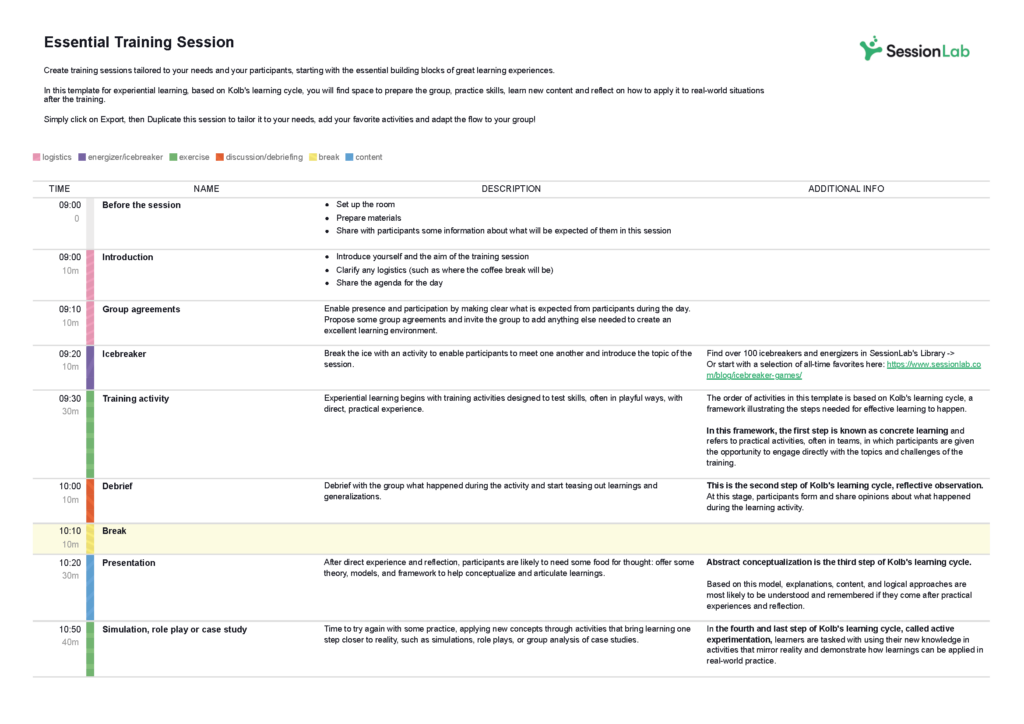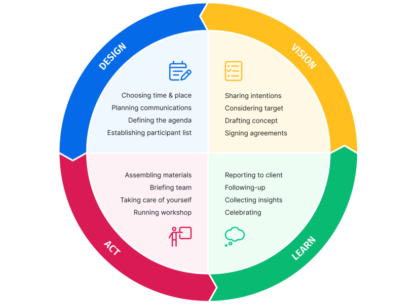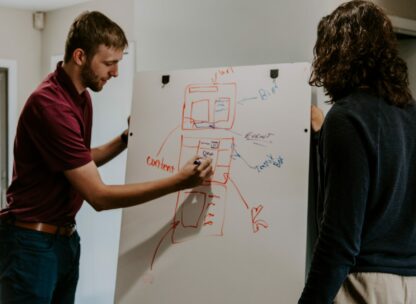How a global pharma company created a consistent design process with SessionLab

In large organizations, maintaining consistency and efficiency in training design can be a challenge – especially when collaborating across locations and teams.
Without a standardized process, it’s easy to waste time on inefficient processes and compromise service delivery too.
By adopting SessionLab, the Learning & Development team at a leading global pharmaceutical company were able to create a structured, reliable process. Let's see how.
The challenge: inconsistent, inefficient training design
As organizations grow, there comes a growing need to standardize processes and ensure high quality training delivery.
Trainers and learning designers need to be able to design and adapt sessions without getting bogged down in sloppy tools. Leaders need to have confidence that every employee will receive the best quality training, wherever they’re located.
With decades of experience in training and facilitation, the leader of the L&D team at this global pharmaceutical company reflected on a key difference between his previous and current organizations:
“In my previous company, we had a clear standard for creating training agendas—everyone followed the same approach, which made it easy to understand and collaborate on training design. But when I joined this organization, even within our small community of trainers, there wasn’t a single agreed-upon way to structure our sessions.”
Without a common framework and process, each trainer developed their own session plans using different formats—mainly Word tables. This led to several challenges:
- Lack of consistency – Without a standardized structure, reviewing and adapting each other’s training sessions was difficult. Best practices weren’t being followed and quality was compromised.
- Time-consuming edits – Manually adjusting timings in Word tables was cumbersome, leading to errors and inefficiencies.
- Scattered materials – Training resources like slides, worksheets, and handouts were stored in multiple locations, making it harder to keep track of updates and find what was needed.
To create a more efficient, structured, and collaborative process, their L&D team turned to SessionLab.

The solution: a centralized platform for training design
Since implementing SessionLab, the team has seen a significant improvement in how they design and manage their training programs.
1. A standardized training design process
By using SessionLab as their shared platform, the team established a clear and structured way of creating training agendas. Now, every trainer works within the same framework, ensuring that sessions are easy to follow, adapt and deliver.
“We built a process and now we have this structure. That’s what SessionLab gives us.”
2. Simple, effective session design
In comparison to other tools, SessionLab is purpose-built for agenda design. Trainers can create agendas in minutes by intuitively dragging and dropping blocks. As they make changes, formatting is maintained and timing recalculates automatically. No more messy tables and manual timing updates.
“SessionLab is easy to work with, and unlike Word tables, we don’t run into issues with timings or formatting.”
3. A central hub for training materials
SessionLab has become more than just an agenda planner—it serves as a single container for all relevant training materials, including PowerPoint slides, PDFs, and handouts.
“We have one place for everything. All the materials trainers need—PPTs, Word documents, PDFs—are linked in SessionLab, making it easy to share them with participants or colleagues.”
The results: efficiency, consistency, and improved collaboration
By implementing SessionLab, the L&D team has successfully standardized training design across their organization. The platform provides:
✅ Clarity and structure – All trainers work within a shared design framework, ensuring consistency and quality.
✅ Efficiency – Drag-and-drop agenda planner and automatic timing calculations eliminate time wasted on formatting Word tables.
✅ Collaboration – Trainers can collaborate async or in real-time, all in a single workspace. With everything in one place, nothing is lost and it’s easy to share with stakeholders and participants too.
With a streamlined process in place, the team can now focus more on delivering impactful learning experiences—knowing their training design is structured, efficient, and future-proof.
This case study is anonymous due to customer’s privacy request.



Leave a Comment